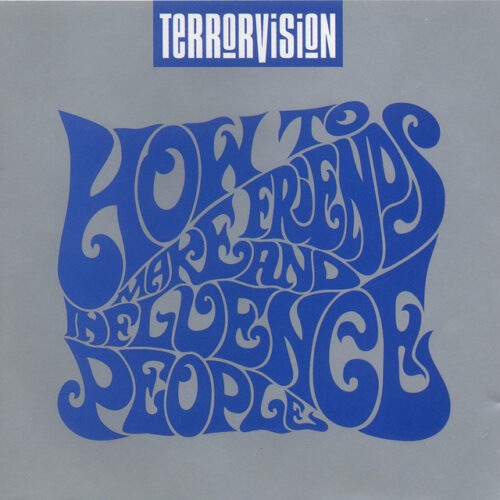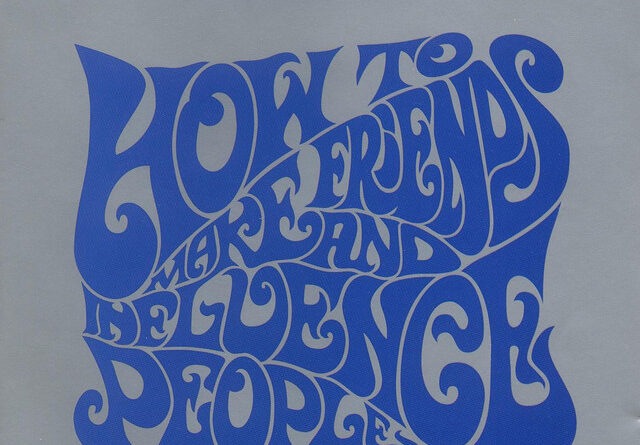HEAVY MUSIC HISTORY: How To Make Friends And Influence People – Terrorvision
“Doo Wop! Bop Ba Doo Wop! Bop Ba Doo Wop! Bop Ba Doo…”
For those old enough to remember the Summer of 1994, there weren’t many rock or indie club nights that didn’t, at some point, involve the entire population of the sticky, smoky dance floor bouncing around like maniacs singing the above line of gibberish. But what was this nonsense? And who or what was responsible for it?
—
1994 was a big year for TERRORVISION. The Bradford four-piece had enjoyed minor success in the UK with their 1993 debut Formaldehyde, with its three singles just scraping the edges of the Top 40. With its follow-up, the band were hoping to take a step up to the next level. 1994 was also a big year for British rock music in general. As they prepared to launch their sophomore effort, How To Make Friends And Influence People, TERRORVISION found themselves at the heart of a musical movement that, for better or worse, would come to be known as ‘Britrock’, thanks largely to the British music press of the time.
But what was Britrock, other than a cheesy name invented almost solely to give heavier UK bands their own version of the burgeoning Britpop scene? Well, that’s actually a tough question to answer. The bands who were haphazardly pigeonholed under the umbrella term of Britrock generally played wildly differing styles of music, although some would argue that the main concept tying them all together was that the music always contained a catchy, commercial element.
The metallic influences of bands like THERAPY? and THE WILDHEARTS were balanced out by their poppier, singalong moments and, in the case of THE WILDHEARTS, lush BEATLES-esque vocal harmonies. There was the funk-tinged rock of SKUNK ANANSIE and REEF, pop punk from 3 COLOURS RED and the slick, sexy, industrial pop of GARBAGE. Stylistically, Britrock was all over the place.
So where did TERRORVISION fit in? Well, if you believe some of the reviews of their debut, they were the British version of FAITH NO MORE, or even RED HOT CHILI PEPPERS. While there may have been some aspects of both of those bands evident on Formaldehyde, their second album was going to take them in a new, poppier direction and – as a result – they would soon be flying up the UK charts.
Which brings us nicely back around to those strange lyrics we started with. Oblivion was the lead single from How To Make Friends And Influence People and was an instant radio hit upon release in March 1994. It also became the band’s first single to actually break the top 40, reaching number 21 and spending six weeks overall in the singles chart. Its singalong chorus, glam rock sensibilities and singer Tony Wright’s excellent vocal performance ensured it would be heard pumping from pubs and clubs around the country for months (or even years) to come. Lyrically, aside from the chorus, the song actually explores the serious political issue of squatter’s rights although, as the band themselves pointed out at the time, that message was somewhat lost on many of the people singing along on the aforementioned sticky dance floors.
Some Formaldehyde fans were concerned that the new album was going to represent a complete change in musical direction for the band but they needn’t have worried. Album opener Alice What’s The Matter? is, if anything, heavier than anything from the debut. A brilliantly punky piece of pop, the metallic riffing of Mark Yates, combined with the driving power of rhythm section Leigh Marklew (bass) and Shutty (drums) showed the band hadn’t completely lost their edge.
This punkier side of the band is clear on other parts of the record too. The swaggering pop metal of Discotheque Wreck feels almost unhinged in places, held together by its quiet-loud dynamic and wonderfully tongue-in-cheek lyrics about gross men ruining your night out (“He’s in your view, he’s in your face, straight out of the 70s and straight out of place”). The full-on two-minute metal assault (with a TERRORVISION twist of course) of What The Doctor Ordered further highlights the energy of the band and, more than anything, sounds like a rock band not only at the top of their game but also really having fun.
That ‘f-word’ (fun, you cheeky beggars) is possibly what really separates the band from the rest of their Britrock cousins. This whole album, recorded in just seventeen days, is still a perfect summer album, filled as it is with bouncy good vibes and the energy you only get from a band in their early 20s riding the wave of newfound success.
That’s not to say that it’s a musically immature or naive record though. Some People Say and Ten Shades Of Grey are both slower, more introspective songs and show the band were really looking to expand their sound and songwriting further. Producer Gil Norton should be credited here, not only with the overall sound of the album but with the added string sections which add another layer to these two songs. Some People Say, in particular, still sounds like a song Paul McCartney never quite got around to.
With a total of 5 top 40 singles on the album, the band weren’t about to rest on their laurels and played a number of big live shows to promote the album following its release. The biggest of these was probably that summer’s Monsters of Rock festival at Donington, the band co-headlining the inaugural Second stage with fellow Britrock band THE WILDHEARTS. The sight of a field full of bouncing fans clearly pleased the band, as they went on to make a number of acclaimed UK festival performances throughout the rest of the 90s and their live shows have made their way into rock legend as some of the most energetic, exhausting and ecstatic experiences you could hope to attend.
The band would go on to have further success throughout the 1990s, finally achieving their biggest hit with 1999’s boozy banger Tequila, which reached number 2 in the singles chart. However, it was the dancier Mint Royale remix of this track that got the most commercial radio play and ultimately it’s a song that many fans don’t really count as ‘proper’ TERRORVISION as a result. This level of success meant that the band could be seen all over your TV channels too, most noticeably presenting iconic TV show Top Of The Pops and appearing as frequent guests on Never Mind The Buzzcocks.
The band split in 2001 following the release of their final (at that point) album Good To Go, which was a relative commercial flop compared to their 90s output. However, the story doesn’t end there as the band have reunited a number of times since their split (albeit it with a slightly different lineup), largely to celebrate the anniversaries of their most successful 90s work. These tours have proved so enjoyable for the band, they’ve even started writing and releasing new material, starting with 2011’s Super Deluxe with another new album scheduled for September 2024.
This means it’s the perfect time to revisit their back catalogue, particularly the masterpiece that is How To Make Friends And Influence People, in preparation to catch them live. Just make sure you know how to shout “doo wop bob ba doo wop” at the top of your lungs and you’ll be reet.

How To Make Friends And Influence People was originally released on April 18, 1994 via Total Vegas.
Like TERRORVISION on Facebook.

